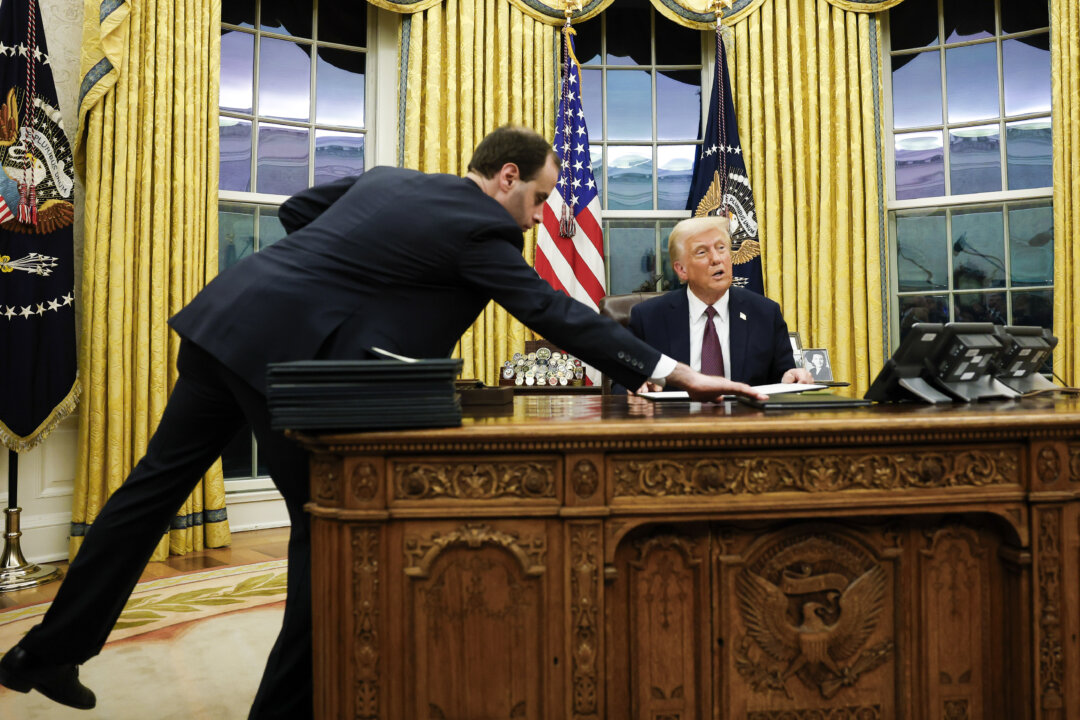News Analysis
Canada could be affected by a lot more than merely potential tariffs as U.S. President Donald Trump kickstarted his plan for America with a slew of actions on Day 1 of his mandate.
Canada’s economy has not kept up with that of the United States in recent years, with lower productivity and an ever-growing gap between the two countries in GDP per capita—a key indicator measuring prosperity.
Trump has now laid a path that could leave Canada further behind when it comes to attracting investors, by shedding regulation, reducing bureaucracy, and unleashing energy production.
At the same time, Canada could stand to benefit from a hotter U.S. economy, and Prime Minister Justin Trudeau made the pitch this week that Canada could contribute to America’s coming “golden age,” as described by Trump in his inaugural address. Trudeau said Canada can provide affordable resources such as energy and critical minerals. Ottawa has promoted critical minerals development as part of its plan to transition away from hydrocarbons.
On the energy front specifically, the Liberal government’s current energy model goes the opposite way of that taken by Trump, with the increasing regulatory environment faced by energy projects coupled with the government’s aim to reach net-zero emissions through caps and regulations. The Liberal government says instead that the focus on achieving net-zero emissions and advancing renewable energy comes with its own tech boom and industrial opportunities.
Aside from the economy, Trump’s intended crackdown on illegal immigrants and crime could have a direct impact on Canada if migrants and drug cartels decide to head north.
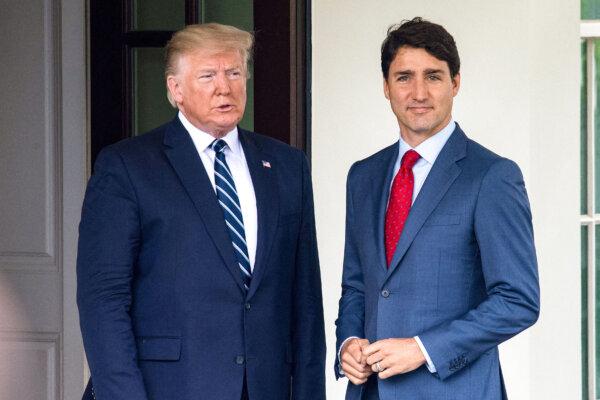
‘Energy Emergency’
During his inauguration on Jan. 20, Trump signed dozens of presidential actions that will have broad impacts on policy and make 180-degree turns on the previous administration’s agenda.
Former U.S. President Joe Biden nixed the Keystone XL pipeline project, which would have linked Alberta to refineries on the U.S. Gulf Coast, on his first day in office in January 2021.
Trump has not announced the project’s resurrection but issued several executive orders around the energy theme, including one declaring a “national energy emergency.”
The order says that hostile actors are seeking to exploit U.S. reliance on foreign energy and that expanding the country’s energy infrastructure is an “immediate and pressing priority” to protect national and economic security.
Trump’s order directs federal bodies to use emergency authorities to facilitate energy production and transportation, including by expediting the realization of related infrastructure and natural resources projects.
Another of Trump’s executive orders calls for “unleashing American energy” by encouraging energy exploration and production on federal lands and waters. The order cancelled over a dozen executive orders signed by Biden on climate change policies and “environmental justice.”
Trump also revoked older executive orders, including one from 1977 signed by late U.S. President Jimmy Carter on environmental impact statements.
Ross McKitrick, economics professor at the University of Guelph, noted how detailed the orders are and how quickly they were issued compared to Trump’s first term.
“The signal is clear: They are absolutely 100 percent done with climate change [policies] as a restriction on U.S. growth and energy, and their priority is going to be developing their energy sector and using that as the main means of promoting economic growth,” McKitrick told The Epoch Times.
This “absolutely” will leave Canada in the dust given the already-existing competitiveness gap, he added. “That makes it really hard for us to attract foreign investment, and this widens that gap to massive proportions.”
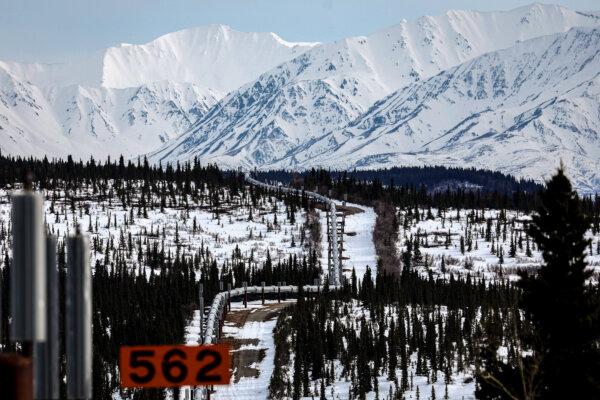
Re-evaluating Stances
This change of course taken by Trump already has previous opponents to resource projects in Canada re-evaluating their stances.
The president of the Union of BC Indian Chiefs, Grand Chief Stewart Phillip, had opposed the Northern Gateway pipeline to bring Alberta’s oil to the Pacific Ocean. He said on Jan. 21 that Canada now has “no choice” but to reconsider the project, citing Trump’s desire to expand energy infrastructure.
“I would suggest that if we don’t build that kind of infrastructure, Trump will—and there will not be any consideration for the environment or the rule of law or anything along those lines,” Phillip said at a press conference in Vancouver.
A separate Trump executive order specifically calls for the unlocking off the “bounty of natural wealth” in the state of Alaska. The policy says the development of Alaska’s liquified natural gas (LNG) potential should be prioritized to supply other U.S. states and allied countries in the Pacific region.
Trudeau previously rejected the idea of developing LNG terminals on the East Coast to supply Europe. During German Chancellor Olaf Scholz’s visit to Canada in 2022, the prime minister said there had “never been a strong business case” for doing so. Germany was looking to move away from dependency on Russian gas after Russia invaded Ukraine, and Scholz was hoping Canada would help. Japan and Greece have also asked Canada for LNG.
Ottawa has also banned oil tanker traffic off the north coast of British Columbia, which would have enabled exports to overseas markets. A major pipeline project to carry Alberta oil to the east of the country, Energy East, was also cancelled in 2017 after the federal government brought in additional regulatory requirements.
Minister of Environment and Climate Change Steven Guilbeault says that reducing greenhouse gas emissions is an important obligation for Canada as part of its climate change policies, and that the efforts Canada is making will help bring about an “economic boom of clean energy.”
“Carbon management technologies will be an essential part of the transition to a net-zero economy by 2050,” Guilbeault said. “The strategy will help in achieving our climate goals while creating opportunities for clean and inclusive growth.”
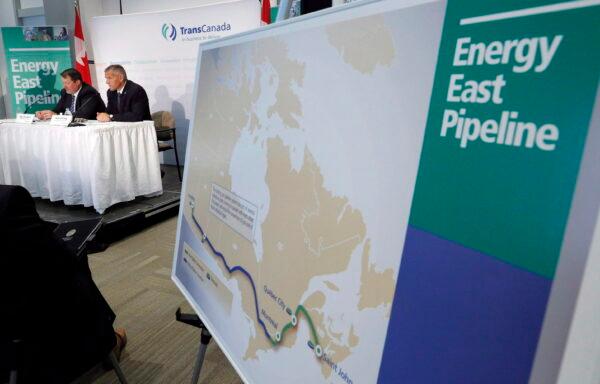
EV Mandate
A section of the executive order on unleashing American energy could also have direct ramifications for Canada, as Trump seeks to cancel Biden’s electric vehicle (EV) mandate. The previous administration, similar to the Liberal government, had sought to impose quotas on car manufacturers.
The Biden administration’s goal was for half of all new vehicles sold in the United States in 2030 to be zero-emission vehicles. Meanwhile Ottawa still seeks to achieve 100 percent zero-emission vehicle sales by 2035 for all new light-duty vehicles, which include most personal vehicles, like cars, SUVs, and light pick-up trucks.
To that end, Ottawa and the provincial governments provided billions of dollars in subsidies to car and battery manufacturers to build a presence in Canada to support the EV market.
Trump’s executive order says it’s now U.S. policy to eliminate the EV mandate and to “promote true consumer choice, which is essential for economic growth and innovation.” The order also seeks to terminate state emissions waivers that limit the sale of gas-powered vehicles, as well do away with “unfair subsidies and other ill-conceived government-imposed market distortions that favor EVs.”
Given the integrated car manufacturing supply chain between Canada and the United States, decreased American demand will have a direct impact this side of the border. The EV market is also facing headwinds internationally, with manufacturers lowering their ambitions for sales.
Canadian consumers have also shown limited interest. An Ipsos poll from October 2024 suggested that 55 percent of Canadians oppose the 2035 EV mandate, with two-thirds (66 percent) saying the timeline is unrealistic.
Flavio Volpe, president of the Automotive Parts Manufacturers’ Association, says car companies need to always evaluate their markets according to the present conditions.
“Those companies are going to have to answer to their shareholders if they don’t go where the consumer wants them to go,” said Volpe, who was attending a federal cabinet retreat in western Quebec after being appointed to Trudeau’s Council on Canada–U.S. Relations last week, in response to a question about Trump’s executive order.

Illegal Immigration
Trump ran for president on the promise of stemming the flow of illegal immigrants at the U.S.-Mexican border and conducting mass deportations of those already in the country.
Before the heightened concerns about the imposition of U.S. tariffs, Canadian authorities were making contingency plans for an increased flow of illegal immigrants. The RCMP told The Epoch Times after Trump’s win in November that it was planning for scenarios ranging from a small uptick of illegal border crossings to a “complete crisis.”
Several of Trump’s executive orders signed on Jan. 20 relate to securing the border and implementing deportations. His threat of imposing 25 percent tariffs on Canada are also dependent on whether Canada takes action to stop the flow of immigrants and illegal drugs through its borders to the United States.
Trump’s order on “Protection the American People Against Invasion” establishes the policy for the prosecution and removal of illegal migrants. “Many of these aliens unlawfully within the United States present significant threats to national security and public safety, committing vile and heinous acts against innocent Americans,” the order says.
The Canada-U.S. Safe Third Country Agreement makes it harder for illegal immigrants in the United States to attempt to enter Canada by making asylum claims. The agreement generally dictates that the first country of landing is where the asylum claim should be made.
Ottawa and Washington closed a loophole in the agreement in March 2023 so that it applies to the entire land border. Previously, migrants were crossing into Canada outside ports of entry, such as Roxham Road, Que., to file asylum claims.
There is a remaining clause that could serve as a loophole, however, which states that neither Canada nor the United States can return a refugee claimant to the other country if it “determines that the refugee status claimant did not make a claim within 14 days after crossing the land border between the ports of entry.”
In other words, an illegal immigrant who enters Canada without being detected can evade authorities for two weeks and then make an asylum claim, and the United States can then refuse to accept the individual’s return.
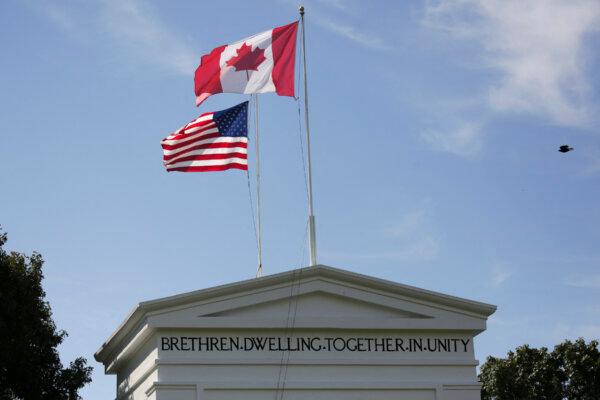
Crime Crackdown
Trump also issued an executive order creating a process to designate some drug cartels and transnational criminal groups as foreign terrorist organizations.
The order says the cartels’ “activities, proximity to, and incursions into the physical territory of the United States pose an unacceptable national security risk to the United States.”
As a further sign the Trump administration is taking a hard line on immigration and transnational crime, another executive order calls on the defence secretary to deliver a plan that tasks the U.S. military’s Northern Command with a mission to seal the borders and maintain U.S. sovereignty, territorial integrity, and security by “repelling forms of invasion including unlawful mass migration, narcotics trafficking, human smuggling and trafficking, and other criminal activities.”
Trump has previously suggested using military force to deal with cartels in Mexico.
Reacting to the executive orders on Jan. 21, Mexican President Claudia Sheinbaum said Mexico would defend its sovereignty. “We all want to fight the drug cartels,” she said. “[The U.S.] in their territory, us in our territory.”
As the operational environment for cartels in America and Mexico becomes more difficult, it could lead them to seek to expand their activities in Canada and exploit an undefended and more porous border, McKitrick said.
“When they crack down on what’s happening in Mexico, those cartels may look around to see where’s an alternative place for them to operate,” he said.
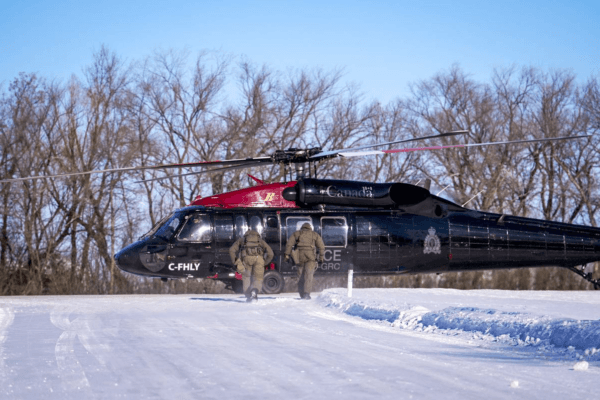
Ottawa announced a $1.3 billion dollar plan to boost border security and disrupt the fentanyl trade in December, less than a month after Trump linked his tariff threat to border issues. This includes the leasing of two Blackhawk helicopters by the RCMP, with border patrol flights having started in Manitoba on Jan. 19.
The plan also includes the expansion of border security agencies’ drone fleet and detector dog teams.
The Canadian Press, The Associated Press, and Reuters contributed to this report.

